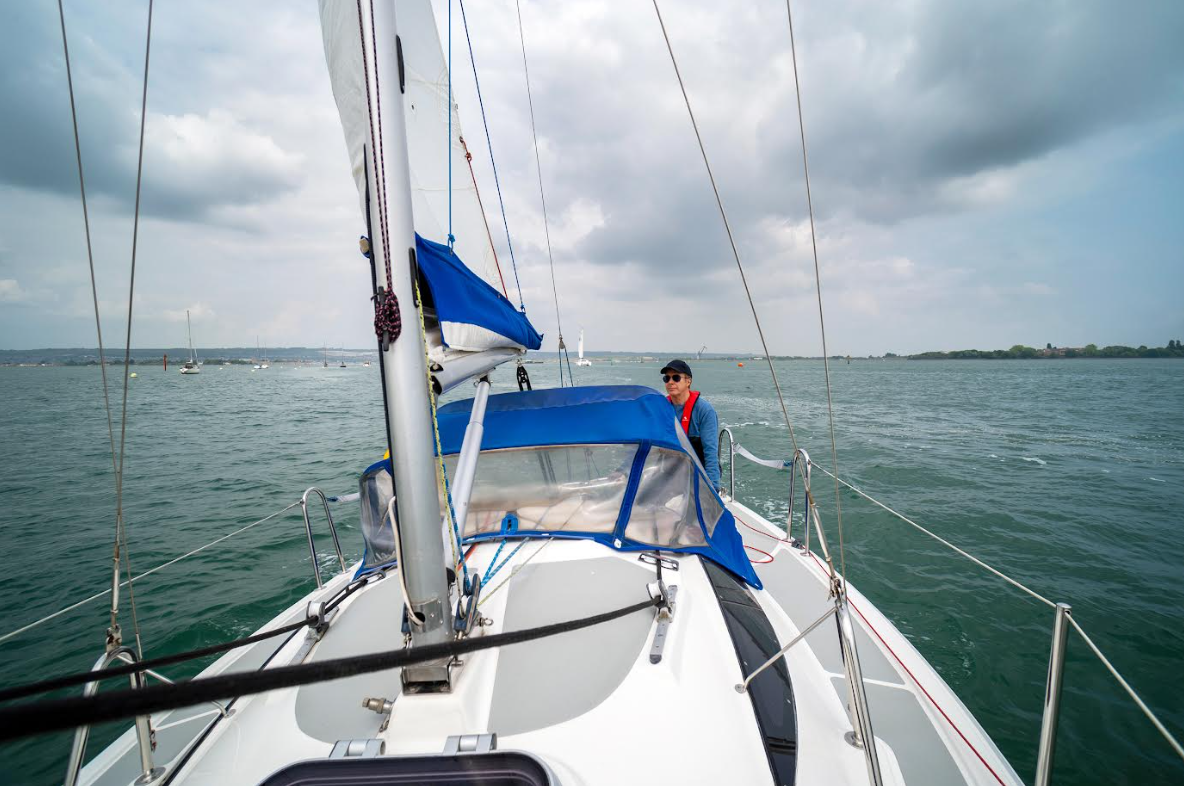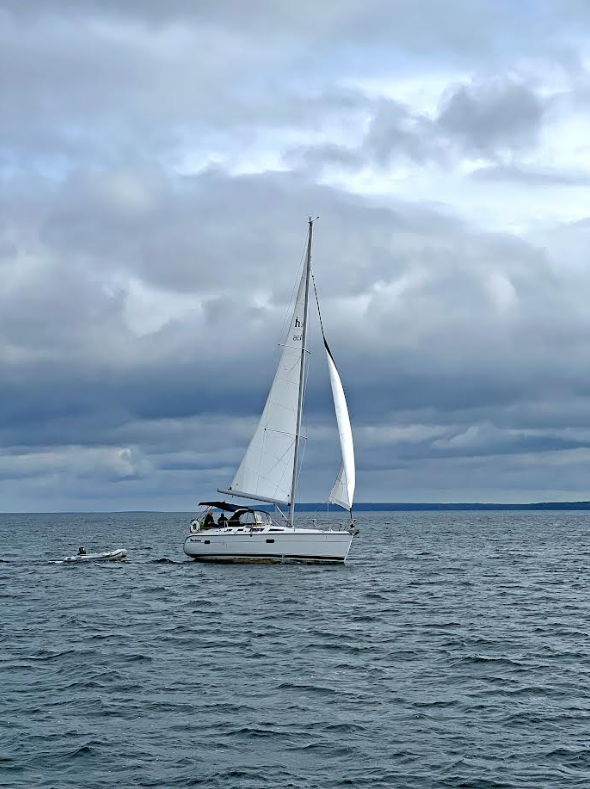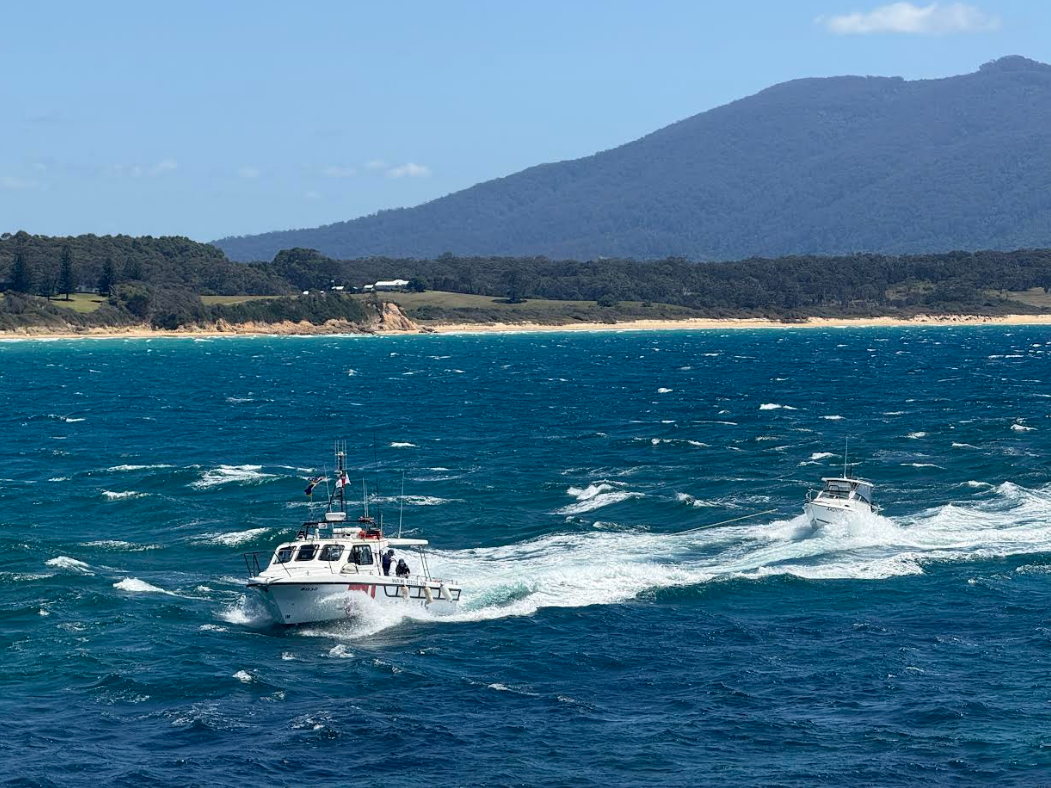
Checking the marine weather forecast is a key part of responsible boating, however sometimes conditions can change unexpectedly. Two boating safety experts share some advice about what to do if you’re caught out on the water in a storm.

Glenn Sullivan, Monaro Region Zone Duty Operations Manager with Marine Rescue NSW.
Boaters should always check the weather and conditions as part of their pre-launch procedures and monitor conditions while out on the water, but sometimes we do get caught in storms. If you do need to weather a storm, follow these safety tips:
- Stow away any loose items to prevent projectiles and load shifting and secure the deck.
- Close and secure all hatches and windows.
- Reduce the windage on the vessel and make way into the sea and storm. Your speed should be fast enough to maintain control but slow enough to ensure safety in the conditions and avoid jumping over waves. Try to approach the waves at 45 degrees.
- Assess whether heading to a safe anchorage is possible, or if it is safer to stay out wide and ride it out.
- Brief your crew and passengers on what your plan is.
- Call your local volunteer marine rescue (VMR) and provide them with your caller ID and your intentions. This will make any calls quicker if needed, and the local VMR can prepare for a potential assist. They are there to help, but they can only help if they know you need it.
- As visibility drops, turn on your navigation lights.
- Ensure crew and passengers are wearing their lifejackets correctly, and inspect to make sure they know how to use and deploy them if required.
- Make sure the emergency position indicating radio beacon (EPIRB), flares, and safety equipment are all readily available, and that everyone knows how to use them, just in case you, as the master, become incapacitated.
- After the storm passes, check everyone for injuries and any damage to the vessel. Call the local VMR again to inform them of your intentions and your condition. The best advice when considering storms is to confirm the weather forecast by all available means, and be prepared to enter a safe harbour, even if it takes extra time.
Visit marinerescuensw.com.au
Ian Beard, Training Officer for Volunteer Marine Rescue WA’s Marine Radio Communications Support Group.
- Weather can change unexpectedly. In Australia’s north, from November to April, severe storms and heavy rainfall leading to flooding are common, not to mention tropical low-pressure systems and cyclones.
- The boater’s best friend all year is the marine weather forecast and being able to understand it is a vital part of boating safety.
- Before heading out onto the water check the marine weather forecasts. In Australia, visit the Bureau of Meteorology (BOM) website or use the BOM Weather App to access the latest weather warnings, forecasts and observations, including the MetEye forecast winds, waves and weather maps. The Golden Rule is: ‘if in doubt, don’t go out’.
- While out on the water, it’s also important to keep your Marine VHF radio tuned to channel 16 for Sécurité safety messages. This will help to keep you informed about the current weather conditions.
- If you are caught out on a boat during severe weather, personal safety should always be the number one priority.
- At the first sign of bad or severe weather while you on the water, make sure everyone on board is wearing their lifejacket correctly.
- If possible, head for the nearest mooring area, marina, boat ramp, or other safe haven, and follow any directions received from the regional harbour master, police or emergency services.
Visit vmrwa.org.au
For boating news, features and interviews, subscribe to Nautilus Marine Magazine here.
